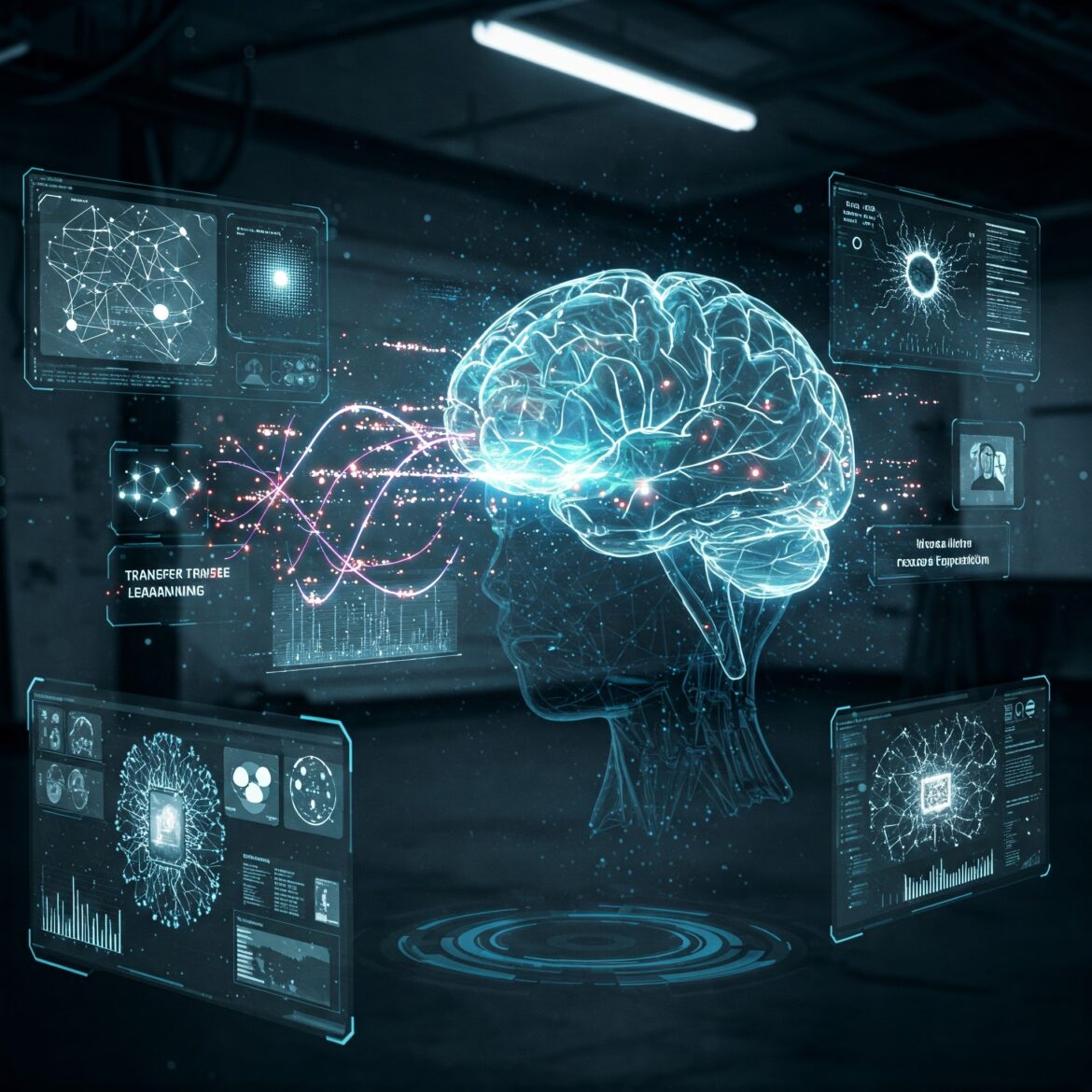What is Transfer Learning?
Have you ever picked up one skill and noticed it helped you master another? Take riding a bike, for instance. If you already know how, getting on a motorcycle might feel less daunting because you get the basics of balance and movement. This idea applies to machine learning too—we call it transfer learning.
Transfer learning is a method where knowledge gained from solving one problem has an impact on tackling a different but related problem. Rather than training a model from the ground up every time, we take a pre-trained model and tweak it to fit a new task. This helps us save time and resources, and often leads to improved outcomes.
How Transfer Learning Works
Picture this: you’re constructing a house. Rather than placing each brick yourself, you begin with a strong base and then adjust it to suit your needs. This concept mirrors transfer learning. Here’s how it works:
- Pre-training: A model first learns from a big set of data to grasp common patterns and features. Take an image recognition model as an example. It might train to spot basic shapes, textures, and colors in millions of pictures.
- Fine-tuning: The pre-trained model then gets refined using a smaller more focused set of data. Let’s say you want to find specific health issues in X-ray images. You can take a general image recognition model and fine-tune it with medical pictures.
This method lets models adjust to new jobs without needing huge amounts of training data.
Why Does Transfer Learning Matter?
A major hurdle in machine learning is getting enough labeled data. Many tasks lack large top-notch datasets. Transfer learning tackles this issue by allowing models to use existing knowledge.
Here’s why it’s changing the game:
- Cuts Time & Costs: Building models from the ground up takes a lot of computing power. Transfer learning makes this process much faster.
- Improves Results: Models often get more accurate even with less data.
- Versatility: You can use transfer learning for many different jobs, from looking at medical scans to understanding human language.
Real-World Examples of Transfer Learning
Transfer learning has an impact on various fields. Here are some typical cases:
- Image Recognition: ResNet and VGG models come pre-trained on huge datasets (like ImageNet) to spot thousands of objects. You can then tweak these models for specific uses such as finding cancerous tumors in medical scans.
- Natural Language Processing (NLP): Big language models like BERT and GPT-3 learn from tons of text. You can then adjust them for jobs like chatbots figuring out how people feel about something, or translating between languages .
- Speech Recognition: Voice helpers like Siri and Alexa use what they’ve learned before to get better at understanding different accents and languages.
Key Benefits of Transfer Learning
- Productivity: Makes training quicker and cuts down on computing costs.
- Better Results: Often brings about more accurate outcomes with fewer data points.
- Broader Use: Can be put into action across various sectors and jobs.
